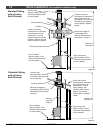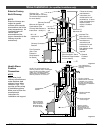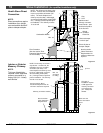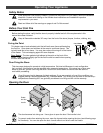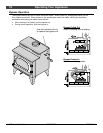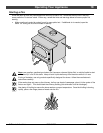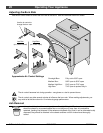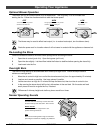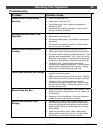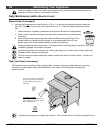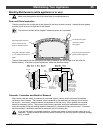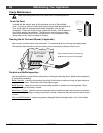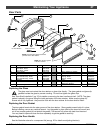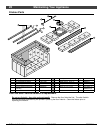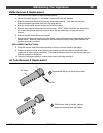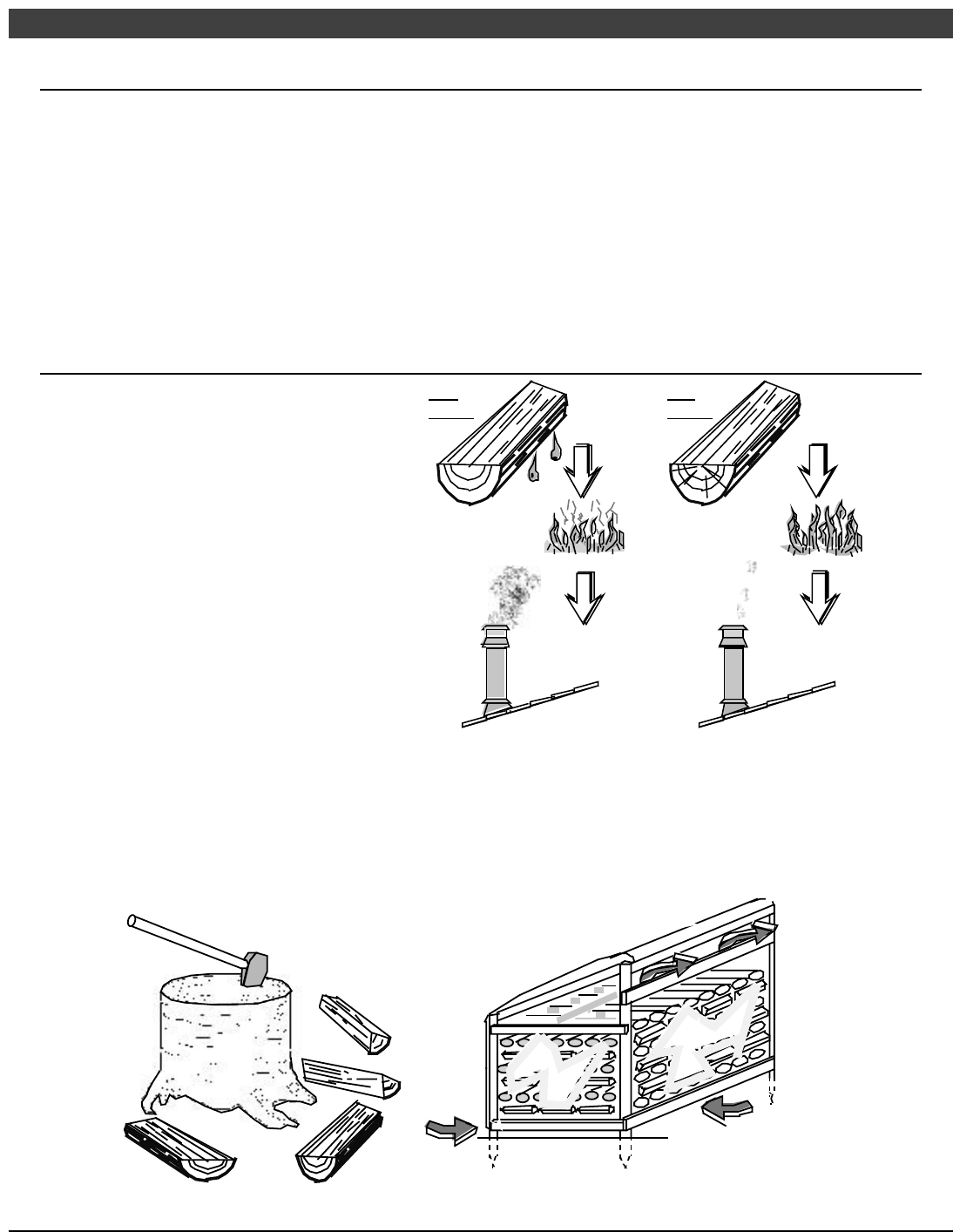
22 Operating Your Appliance
© Travis Industries 100-01164 4041115
Hints for Burning
• Get the appliance hot before adjusting to low burn
• Use smaller pieces of wood during start-up and high burns to increase temperature
• Use larger pieces of wood for overnight or sustained burns
• Stack the wood tightly together to establish a longer burn
• Leave a bed of ashes (1/2" deep) to allow for longer burns
• Be considerate of neighbors & the environment: burn dry wood only
• Burn small, intense fires instead of large, slow burning fires when possible
• Learn your appliance's operating characteristics to obtain optimum performance
Selecting Wood
• Dry Wood is Key
• Dry wood burns hot, emits less
smoke and creates less creosote.
• Testing Wood Moisture
• Split wood stored in a dry area will
be fully dry within a year. This
insures dry wood. If purchasing
wood for immediate use, test the
wood with a moisture meter. Some
experienced wood burners can
measure wood moisture by
knocking pieces together and
listening for a clear "knock" and not
a "thud".
Wet
Wood
Leads
To
Leads
To
Dry
Wood
Leads
To
Leads
To
Less
Heat
More
Heat
More Smoke
and Creostoe
Less Smoke
and Creostoe
Why Dry Wood is Key
Wet wood, when burned, must release water stored within the wood. This cools the fire, creates
creosote, and hampers a complete burn. Ask any experienced wood burner and he or she will agree: dry
wood is crucial to good performance.
Wood Cutting and Storage
Cut wood to length and
chop into quarters.
Store the wood off the ground in a
covered area. Allow for airflow
around the wood to dry the wood.
Air Flow
Air Flow
Air Flow



